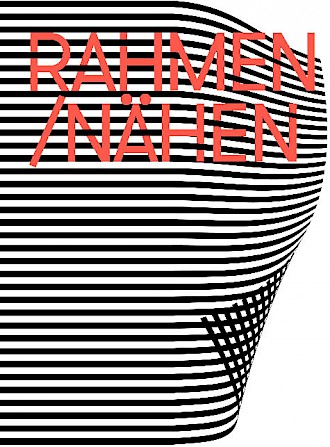
Annual Topic 2014/15
Distinguishing an image area from its surroundings by framing is a fundamental image-constituting operation. The paradigm of the image frame also points, however, to analogous operations constituting reality in other areas besides that of the image. Frames and framing are also active in real constructed space, establishing a distinction between the inside and the outside, the holy and the profane, the private and public sphere, between territories and nations, a distinction which not infrequently is linked to image acts. The aim here is thus first to examine frames and framing processes of all types – beginning with framing in the image composition of painting and then proceeding onto digital images and the manipulation of windows on the computer screen, architectural framing, that of technical and institutional-political border regimes and the framing practices of symbolic-cultural importance such as clothing codes and rules of behaviour: Only through framing can the separate areas in all of these cases be generated in the first place. From a sociological perspective, all interactive and communicative situations are produced through framing (institutional ones, for example), just as the reverse, from a situational perspective, also obtains. At the same time that framing occurs, there is also always the possibility of shifting, doubling, overstepping and breaking through the frame (in the so-called trompe-l'oeil, for example). In the framing process, that which is included or excluded in each instance is also placed in contexts and transitions (Derrida). An example of this is shown in the moving image with its flexible cache as it reflects the relationship between the image field and its surroundings. But this applies in the case of all images and generally for all framing processes.
One opening and closing operation which is the polar opposite of framing but which is far less established as a concept, is ‘sewing’. Whereas framing occurs on the side of separation, the primary operation in the case of sewing is to join together that which is different. The hem forms the boundary between the seam and the frame. Whereas framing is active on the surface or in space, the topological characteristic of seams lies in achieving a transition between the two-dimensional open surface of the material and the three-dimensional closed body of clothing. This still holds true for the concept of the ‘suture’ – which has been established for a long time now in film theory – between flat or two-dimensional image spaces and the real three-dimensional spaces of viewers. What both operations, framing and sewing, have in common, though is, on the one hand, that they generate closed (sur)faces and spaces, on the other, that they are in turn able to break open and overstep, blur the boundaries of and open up these very same (sur)faces and spaces. Here the intent is to study the procedures of joining together and breaking open based on actual textile practices, including the aesthetics of the collage and the montage.
Yet, the sewing and ripping open of seams belongs to the core of fetishistic structures of desire and object constructions. These should not be limited solely to the field of sexuality; they can also be encountered in every case where one is dealing with events of revelation and the production truth. Fetishism provides the unconscious logic for the shifting of that which is represented in the representation – which has to be conceived of as absent – into the medium. Consequently, sewing and scarring are frequently closely associated in religious art in order to intensify the fetishistic interplay between identity and the difference between wounds and seams, the flesh of Christ and the flesh of the image, the creation of the image and the incarnation and to render them as the truth of the image.